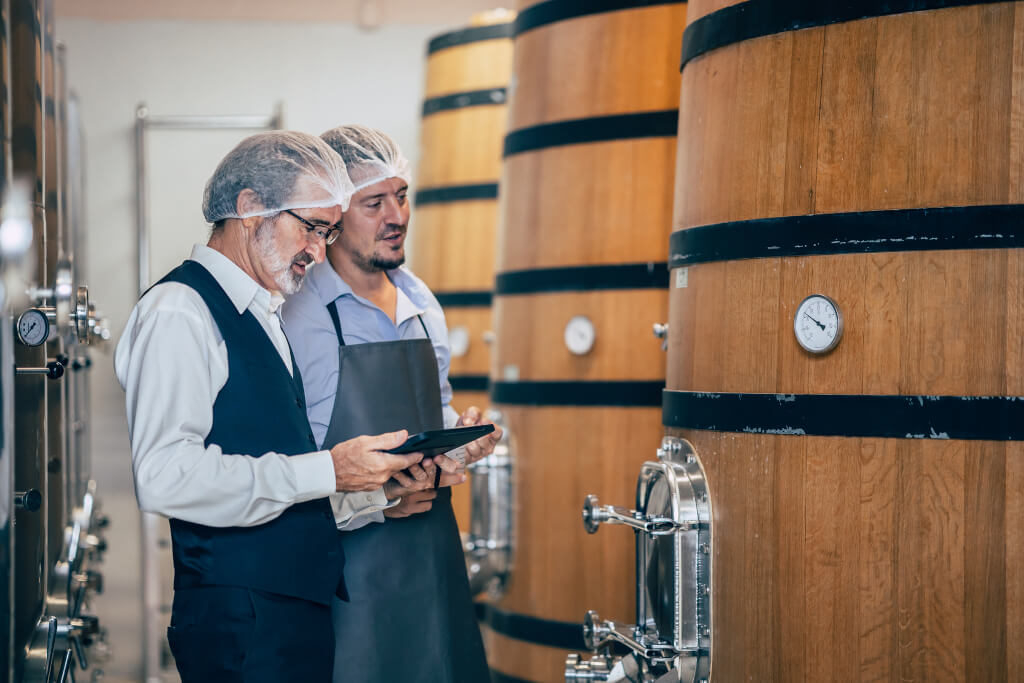Whiskey production is now facing unprecedented challenges due to the evolving face of climate change. This phenomenon is a pervasive reality that’s reshaping the very foundations of whiskey-making. The process, from barley cultivation to the final aging, is finely attuned to the rhythms of the natural environment. However, as climate change alters these rhythms, the Irish and Scottish whiskey distillers are witnessing significant impacts.
As we all know Barley is responsible for the distinctive flavors of whiskey and is now at the mercy of climate change. In regions known for their optimal barley growing conditions, producers are facing new challenges. Increased temperatures and shifting rainfall patterns are leading to irregular growing seasons. These changes the yield and quality of the barley, a crucial component in defining the whiskey’s identity.
Farmers are grappling with the increased prevalence of pests and diseases, a direct consequence of warmer and wetter conditions. Such challenges require not only immediate responses but also long-term strategies to preserve the quality of barley. The situation demands a blend of traditional knowledge and innovative agricultural practices to ensure a consistent supply of this vital ingredient.
How Water Supply Is Affected
Water, often hailed as the lifeblood of whiskey production, is facing its own set of challenges. The purity and availability of water are essential in every stage of whiskey-making. However, changing precipitation patterns, particularly the reduction in rainfall and the emergence of drought conditions, are causing concern. In some areas, water sources that have been reliable for centuries are now showing signs of stress.
This scarcity and variability in water supply have the potential to alter the whiskey’s flavor profile. Distilleries depend on the consistent quality of water for mashing, fermentation, and dilution. Any significant change in the water’s characteristics can impact the taste and quality of the final product. Ireland, known for its abundant water sources, is now dealing with the challenges of managing excess water and ensuring its quality. On the other hand, Scotland, particularly in its whiskey-producing regions, faces the challenge of decreasing water availability. This contrast in water resource challenges directly influences the whiskey production process in each country, from mashing to dilution, potentially affecting the final flavor profile.
Another critical aspect of whiskey production, the aging process, is not immune to the effects of climate change. Traditionally, the maturation of whiskey is a slow and steady process, heavily reliant on stable climatic conditions. However, as temperatures rise, the aging process is inadvertently accelerated. This acceleration could lead to over-aging, where the whiskey might lose its desired balance of flavors.
Distilleries are closely monitoring these changes. The key challenge is to maintain the traditional aging process while adapting to faster maturation rates. This situation poses a unique dilemma: how to preserve the flavors of whiskey in a rapidly changing climate?
In Ireland, increased humidity and rainfall can impact the aging process, potentially leading to a faster maturation rate in the casks. Scotland’s whiskey aging is influenced by its cooler, drier climate, but increasing temperatures are causing a quicker interaction between the whiskey and the oak barrels, potentially altering the traditional flavor profiles associated with Scotch whiskey.
Adaptation and Innovation In The Whiskey Industry

Both Irish and Scottish distilleries are embracing renewable energy, but their approaches reflect their distinct environmental contexts. In Ireland, where wind energy is abundant, many distilleries are investing in wind power. Scottish distilleries, meanwhile, are capitalizing on advances in solar energy and biomass, driven by the necessity of diverse renewable sources due to varying climatic conditions across the country.
In terms of barley production, research into more resilient barley varieties is underway. These strains are designed to withstand erratic weather patterns and resist pests and diseases. Advancements in sustainable farming practices are being adopted to enhance crop yields and quality.
They are implementing measures to reduce water usage and protect their water sources. These efforts range from recycling water used in the production process to engaging in local conservation initiatives to preserve the natural water ecosystems. As for the aging process, distilleries are experimenting with different aging techniques and barrel types to counter the effects of increased temperatures. The goal is to maintain the quality and distinct flavors of whiskey, despite the accelerated maturation.
A key aspect of sustainable distilling is the shift towards renewable energy sources. Distilleries are increasingly harnessing wind, solar, and biomass energy to power their operations. For instance, a notable distillery in Scotland has invested in wind turbines on its property, significantly reducing its reliance on fossil fuels.
In Ireland, solar energy is making headway. Solar panels installed at some distilleries capture abundant energy, even in regions known more for their rolling green landscapes than sunshine. This clean energy source powers various stages of production, from heating the stills to powering the visitor centers, underscoring a commitment to reducing the carbon footprint.
Waste Reduction and Recycling Initiatives
Waste management is another critical area where distilleries are making strides in sustainability. Many distilleries have developed creative solutions to repurpose by-products from the whiskey-making process. Spent grains, a by-product of distillation, are being transformed into animal feed, supporting local agriculture and reducing waste.
Water recycling initiatives are in place in several distilleries. By treating and reusing water in different stages of production, these distilleries are significantly reducing water waste. This is particularly crucial in areas where water scarcity is a growing concern.
Sustainable Packaging and Distribution
The focus on sustainability extends beyond production. Distilleries are exploring eco-friendly packaging options, such as using recycled materials and reducing plastic use in their packaging. This effort not only minimizes waste but also appeals to environmentally conscious consumers. In distribution, there is an increasing trend towards reducing the carbon footprint of transportation. Some distilleries have started using hybrid or electric vehicles for local deliveries, while others are partnering with shipping companies that prioritize low-emission transport methods.
Beyond their immediate operations, some distilleries are actively involved in local environmental conservation projects. Irish distilleries often focus on water conservation and managing the impacts of increased rainfall on their operations and local ecosystems. In Scotland, conservation efforts are more geared towards protecting the natural water sources and peatlands, vital for the distinct flavor of Scotch whiskey, especially in regions like Islay.
Irish and Scottish whiskey producers face distinct future scenarios shaped by climate change. Ireland’s whiskey industry must adapt to increasingly wet conditions and their implications on both barley cultivation and whiskey maturation. In Scotland, the industry is preparing for a range of impacts, from water scarcity to the effects of temperature increases on traditional whiskey aging. These differing challenges highlight the need for tailored strategies in each country to sustain their renowned whiskey industries in a changing climate.

